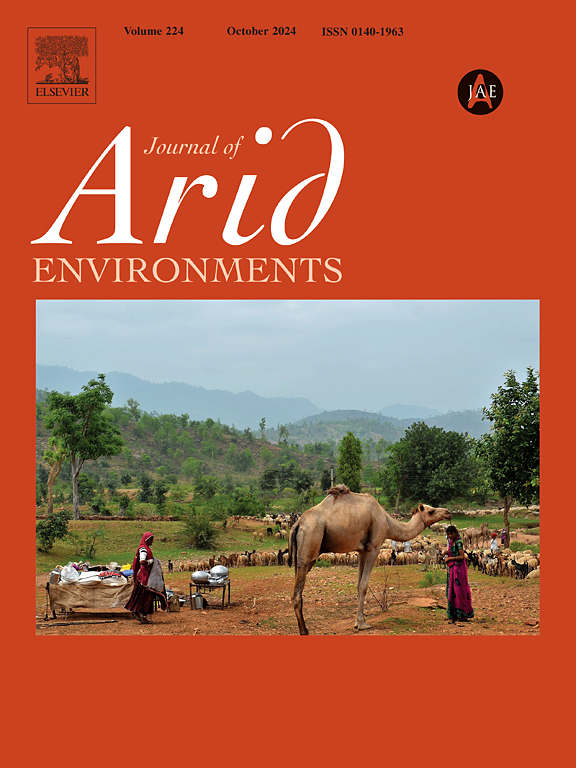The fog harvesting Namib Desert dune grass Stipagrostis sabulicola promotes niche building by modifying substrate and atmosphere conditions
IF 2.6
3区 环境科学与生态学
Q2 ECOLOGY
引用次数: 0
Abstract
The fog harvesting grass Stipagrostis sabulicola is one of the few plants able to cope with the hostile conditions in dune fields of the hyper-arid Namib Desert. S. sabulicola tussocks modify the substrate and atmospheric conditions leading to the formation of fog plant oases (FPO). Average air temperature within FPO canopies was reduced by up to 7.5 °C and air humidity raised by 11 % compared to the bare sand, inducing a lowering of vapor pressure deficit (VPD) by up to 1.5 kPa. Stomatal conductance showed a negatitive correlation with VPD, rising to an average of 435 mmol.m-2 s-1 in the forenoon of foggy days. Due to leaf water runoff during fog events, substrate moisture at the plant basis increased locally to values of up to 16% ensuring adequate plant water supply during fogless days. FPO substrates had finer grain sizes and doubled concentration of organic particles, thus improving water storage capacity. Fog interception rate of the sand increased by up to 109 % with steepening of S. sabulicola mounds. Improved water availability, balanced temperature conditions and the presence of digestible plant material promote niche-building for substrate life, which in turn is a prerequisite for the functioning of fog-driven oases ecosystems.

纳米布沙漠吸雾沙丘草Stipagrostis sabulicola通过改变基质和大气条件促进生态位的建立
采雾草是少数几种能够在极度干旱的纳米布沙漠沙丘地带适应恶劣环境的植物之一。沙布草可以改变基质和大气条件,导致雾植物绿洲的形成。与裸露的沙子相比,FPO冠层内的平均空气温度降低了7.5°C,空气湿度提高了11%,导致蒸汽压差(VPD)降低了1.5 kPa。气孔导度与VPD呈负相关,平均为435 mmol。在雾天的早晨,m2s1。由于在雾事件期间叶片水的径流,植物基础上的基质水分在当地增加到高达16%的值,确保在无雾的日子里有足够的植物供水。FPO基质的晶粒尺寸更细,有机颗粒浓度增加了一倍,从而提高了储水能力。沙土对雾的截留率随着沙土丘坡度的增加而提高了109%。改善的水分供应、平衡的温度条件和可消化植物物质的存在促进了基质生命的生态位建立,这反过来又是雾驱动的绿洲生态系统功能的先决条件。
本文章由计算机程序翻译,如有差异,请以英文原文为准。
求助全文
约1分钟内获得全文
求助全文
来源期刊

Journal of Arid Environments
环境科学-环境科学
CiteScore
5.70
自引率
3.70%
发文量
144
审稿时长
55 days
期刊介绍:
The Journal of Arid Environments is an international journal publishing original scientific and technical research articles on physical, biological and cultural aspects of arid, semi-arid, and desert environments. As a forum of multi-disciplinary and interdisciplinary dialogue it addresses research on all aspects of arid environments and their past, present and future use.
 求助内容:
求助内容: 应助结果提醒方式:
应助结果提醒方式:


